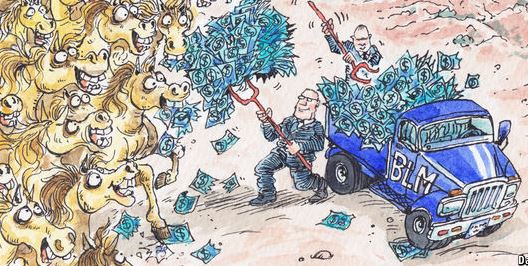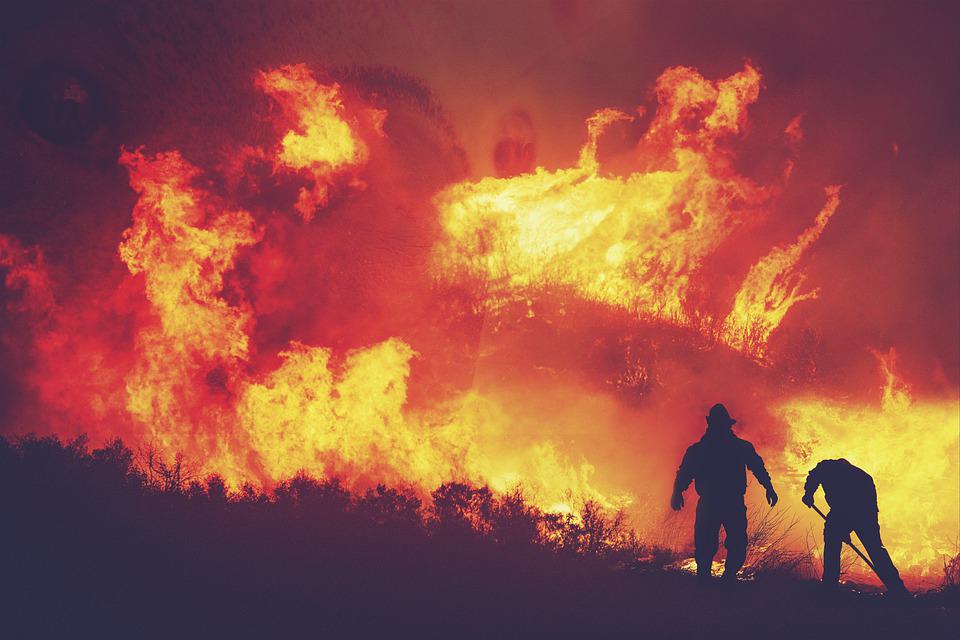
According to this New York Times article in 2002, the Dann sisters of the Western Shoshone Tribe in Crescent Valley, Nevada, are rough, elderly, hidebound ranchers who live without electricity, hot water or furnace. Though Carrie Dann is nearly 70 and her sister Mary is nearly 80, they still break their own horses and mend their own fences. This is how their Shoshone Indian ancestors lived, and the bones of those ancestors are among the Danns’ closest neighbors.
Their wish is to be left alone, and to graze their cattle freely on land they claim as their birthright.
The federal government’s wish is for the Danns to stop fattening their livestock at taxpayers’ expense.
This battle has gone on for 30 years, and the Danns have not given up yet, even though the government has seized hundreds of their cattle, sold the animals at auction, charged the sisters nearly $50,000 in fees and fined them $3 million for willful trespass.
”Trespass? Who the hell gave them the land anyway?” Mary Dann asked as she mended a fence on a windswept desert morning. ”When I trespass, it’s when I wander into Paiute territory.”
Her sister Carrie said: ”I was indigenous and in one single evening they made me indigent. If you think the Indian wars are over, then think again.”
The dispute is rooted in the refusal by the sisters and some other Shoshone ranchers to pay grazing fees on traditional Western Shoshone land — nearly 26 million acres in Nevada, roughly two-thirds of the state.
The government considers it public land, and to drive the point home, 40 agents from the Bureau of Land Management descended on the Danns’ ranch in September, heavily armed and fortified with helicopters, and confiscated 232 cattle, which were later sold.
The sisters and their supporters argue that their tribe never legally ceded these range lands. Though the federal government controls 85 percent of Nevada, they contend that it has no legitimate title to the land — or the gold, water, oil and geothermal energy beneath it.
The whole convoluted conflict is wending its way through the United States Senate, where a bill recently made its way out of committee that would allot a one-time payment of $20,000 to each of the 5,000 enrolled members of the Western Shoshone tribe. The $100 million in the bill, sponsored by Senator Harry Reid, Democrat of Nevada, would be one of the largest Indian land settlements in history.
Tessa Hafen, a spokeswoman for Senator Reid, said the bill was a response to a request for help.
”The tribe came to the senator and asked them to help them out,” Ms. Hafen said. ”Tribal members overwhelmingly supported it. They want their payments.”
The price is set at 15 cents an acre, using a formula based on land prices in 1872. The now-defunct Indian Claims Commission ruled in 1962 that the Shoshones had lost possession by gradual encroachment by settlers.
‘ ‘Encroach what?” Carrie Dann wanted to know. ”There isn’t anybody living out here. Look around.”
‘Encroach what?” Carrie Dann wanted to know. ”There isn’t anybody living out here. Look around.”
Indeed. The vista of Crescent Valley includes a few sun-whipped shacks and aluminum trailers. Broken beer bottles litter the county road, but one would be hard pressed to call this land settled.
Depending on who is asked, the Danns are either modern-day Geronimos, common rabble-rousers or scofflaws.
Once before, in 1992, federal agents came and confiscated Dann family livestock. A six-day standoff ensued, ending with their brother Clifford dousing himself in gasoline and threatening to light it. Clifford went to prison and went deaf, and 250 horses went to auction.
Now half the family herd is gone and a $3 million note hangs over their heads, multiplying problems in an already bad year for the sisters. They are perhaps five feet tall, with worn knees, thick hands and good humor. Mary is quiet and Carrie can leap into language so caustic it could wear the enamel off teeth.
There has been no moisture to speak of this year. Grasshoppers swarming down from the mountains ate what greenery there was. Then the government took the cattle.
”They want us to give up and go away to the city,” Carrie said over a lunch of Spam sandwiches in her ramshackle house tucked in the shade of cottonwood trees. ”I’d die in the city.”
Today, the value of this land ranges from $250 an acre to $1,000. In the valley here, two mines operating on government leases are extracting gold worth billions of dollars.
”Fifteen cents an acre?” shouted Carrie Dann, getting heated. ”Dumb Indians. They shouldn’t take the deal for $20 million an acre.”
For nearly 40 years, the Shoshones refused to accept the money when the government first offered a payment. The Danns, representing their people, took their case to the Supreme Court, which ruled in the early 1980’s that the payments did constitute a settlement.
”You refuse it and they stick it in your back pocket,” is how Carrie Dann put it.
Times change, and many Shoshones are tired of the dispute. They want the money. Most live in the cities, work 9-to-5 jobs or have no jobs at all. A payday would go a long way.
 ”I asked one of the ancients what she was going to do with the money and she told me she was going to buy a mattress,” said Nancy Stewart, a retired teacher who wants to take the money. ”But she may never see the money because of the Danns. They’re hardliners who want two-thirds of the state back. That’s never going to happen.”
”I asked one of the ancients what she was going to do with the money and she told me she was going to buy a mattress,” said Nancy Stewart, a retired teacher who wants to take the money. ”But she may never see the money because of the Danns. They’re hardliners who want two-thirds of the state back. That’s never going to happen.”
Others agree with the sisters.
”I know my people, and that money would be spent in no time,” said Lois Whitney, a Shoshone who lives in Elko, an hour’s drive from here. ”The people are just living for today. Thinking about a new truck and beer. It’s greed.”
The bill gained momentum after Felix Ike, chairman of the Te-Moak Tribe, which includes the Shoshone people in areas around the Nevadan towns of Wells, South Fork, Elko and Battle Mountain, conducted what he calls a binding vote in June.
In the end, the people voted to take the money: 1,647 in favor, 156 against. But then Mr. Ike’s tribal council did not recognize the vote.
Still, the process rolls toward an end.
”Once the money is paid, it is very clear in my mind that the cloud over their claim is clear,” said Chief Raymond Yowell of the Western Shoshone National Traditional Council — who had 88 head of cattle confiscated in May — referring to the government. ”They can then say to the world that they bought it.”
A recent report by the Inter-American Commission on Human Rights of the Organization of American States found that the federal government was using illegitimate means to claim ownership and control of the Western Shoshone lands.
Moreover, an independent auditor hired by the Bureau of Land Management to evaluate its land exchange policies stated in a report this month that the agency had colluded with private developers to trade away government land at below-market prices.
Many of those trades occurred in Nevada, and the auditor suggested a 90-day moratorium on such land transfers.
JoLynn Worely, a spokeswoman for the bureau, said the confiscation was an effort to apply the laws equally — laws, Ms. Worely said, that the Dann sisters think they are above.
”They grazed their own land to dust and then they want to graze public land for free,” Ms. Worely said. ”Times are bad for everyone, and the white ranchers want to know why they pay and the Indians graze their animals for free.”
The Danns were grazing 1,500 cattle and horses on drought-stricken land that should only support 200 animals, Ms. Worely said.
Carrie Dann admitted her land was overgrazed, but said she was not environmentally reckless.
”The rains will come again and the grass will grow back,” she said. ”But when the Shoshone people are gone from this land, we are dead.”
Although media attention of the Dann Sisters’ situation is actually fairly sparse, especially compared to the somewhat similar situation involving Cliven Bundy Family, below is a collection of links to other articles:
http://www.nytimes.com/2003/02/07/us/us-agents-seize-horses-of-2-defiant-indian-sisters.html
http://www.reviewjournal.com/columns-blogs/john-l-smith/shoshone-sisters-also-couldn-t-beat-blm
http://nevadamagazine.com/home/extras/the-dann-sisters-searching-for-reciprocity-for-the-western-shoshone/
http://usuncut.com/resistance/dann-sisters-brutalized-by-blm-defending-land/



Great site. Informative post. Thanks. Continue the good work.
Another insightful article about what is going on with the Western Shoshone: http://www.corpwatch.org/article.php?id=14874